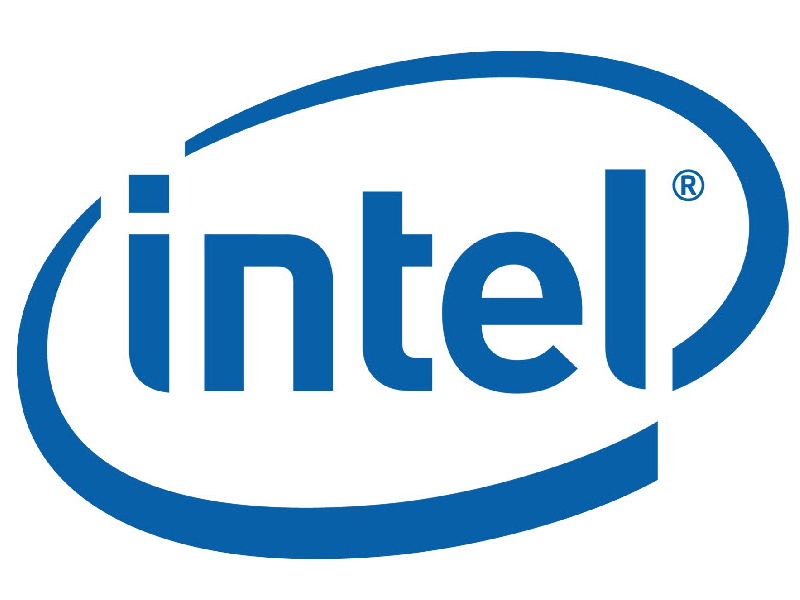Intel Discusses Y Chips For Tablets
Firm believes upcoming Surface Pro tablet is suitable for a Y series chip.
Intel has discussed its vision for the company's recently unveiled Y series chips designed for tablets.
"We believe...detachables are fundamentally different," Adam King, Intel's director of notebook marketing, told Cnet, referring to laptop designs with displays which can be removed from the base to become standalone tablets.
"The point of differentiation is that the processor is...behind the glass. Detachables we think of as a tablet first. Because when you take it out of the base, it better be a pretty good tablet or the user is going to be disappointed. If you're going behind the glass, you need the Y processor."
He referred to Microsoft's forthcoming Surface Pro tablet as a good example of the kind of device suitable for a Y series chip. "Getting it behind the glass is more challenging because you want a thin design there and you've got all of the heat coming from the LCD so it's much more thermally challenging to put it behind glass (than under the keyboard)."
King also described the new power rating for its Y chips, which he admitted required "more context". "TDP is designed to light up as much of the [chip] as possible. The reality is that 99.9 percent of users will never actually stress their system to that level. So there's actually a big margin of safety built into TDP."
"For the devices that we're targeting, as they move to more content-consumption (tablet-use) workloads, it doesn't make sense anymore to just give guidance to our OEMs on that extreme-set-point TDP definition. SDP is a workload that represents a more mainstream workload. For the Y processor line we'll talk about SDP because that's really the primary design point that makes sense for the kind of devices that use those processors."
SDP will now only be applied to Y series chips including future Haswell processors. TDP, meanwhile, will continue to be utilized more for U and M series processors that require more power.
Get Tom's Hardware's best news and in-depth reviews, straight to your inbox.

Zak Islam is a freelance writer focusing on security, networking, and general computing. His work also appears at Digital Trends and Tom's Guide.
-
whyso I guess what he means is the difference between running prime 95 and high level use (endcoding on all cores).Reply
Or furmark vs. gaming power consumption for gpus. -
tpi2007 Yeah, but if we want to know the chip's TDP, we should be told what it really is. Otherwise we will be greeted with a mesage "your tablet is overheating, it will now shut down until it cools down". Hmmm, I think I've read about a popular tablet doing this.Reply
So, the thing is, talk about SDP all you want, but unless you are actually giving OEMs the freedom to actually make the SDP converge with the TDP by running downclocked versions of the CPUs, you should also provide TDP for those who wish to know. -
TeraMedia Isn't there a flaw in his thinking? Yes, the usage model in tablet mode may involve lower power consumption and heat generation, but as soon as you reconnect the keyboard and turn it back into a laptop or notebook, the system may be subjected to the same higher-level power consumption rates that other laptops face. So you have to design the thermals for the laptop (high power) mode, not the tablet (low power) mode. After all, it's not like you can pull the CPU out from behind the glass when you connect the keyboard.Reply -
tpi2007 Reply9444916 said:Isn't there a flaw in his thinking? Yes, the usage model in tablet mode may involve lower power consumption and heat generation, but as soon as you reconnect the keyboard and turn it back into a laptop or notebook, the system may be subjected to the same higher-level power consumption rates that other laptops face. So you have to design the thermals for the laptop (high power) mode, not the tablet (low power) mode. After all, it's not like you can pull the CPU out from behind the glass when you connect the keyboard.
Exactly, hence my point also. -
ojas Intel's provided both the TDP and SDP for their Y series chips, th y-series i5s for example had a TDP of 13w and an SDP of 7 or 8w, can't really remember. I think it was 7w.Reply
I don't see the point of this post, less why it's "news" since the y-series slide leak was about a month ago. A few people speculated then that since both the y-series and surface pro launch in Jan, the surface would most likely have a y-series i5, probably the only way to make it fanless. -
CrArC Reply"For the devices that we're targeting, as they move to more content-consumption (tablet-use) workloads, it doesn't make sense anymore to just give guidance to our OEMs on that extreme-set-point TDP definition. SDP is a workload that represents a more mainstream workload. For the Y processor line we'll talk about SDP because that's really the primary design point that makes sense for the kind of devices that use those processors."
Soo..... if I want to use my Y-series tablet to do something processor-intensive it will burst into flames. Awesome. -
Blandge ojasIntel's provided both the TDP and SDP for their Y series chips, th y-series i5s for example had a TDP of 13w and an SDP of 7 or 8w, can't really remember. I think it was 7w.I don't see the point of this post, less why it's "news" since the y-series slide leak was about a month ago. A few people speculated then that since both the y-series and surface pro launch in Jan, the surface would most likely have a y-series i5, probably the only way to make it fanless.Reply
Actually, it doesn't work that way. In order for the SDP of the part to remain at 7W, the OEM must keep the CPU below 80 degrees Tjmax (Max junction temp). Therefore, in order to rate a product at 7W TDP, the device must never go above 80C. That is directly tied to device cooling, so the device needs BETTER cooling in order to achieve 7W SDP. Passive cooling likely will not work. -
True Blandge, but Intel's point is that in tablet mode, you won't be stressing it to those heat levels. The device rates at 13W TDP (not 7W TDP). My guess is its heavily clock and voltage regulated to keep temperatures down... perhaps its dyamic enough to know when it is connected to a base/plug, and when it is not.Reply
-
ojas BlandgeActually, it doesn't work that way. In order for the SDP of the part to remain at 7W, the OEM must keep the CPU below 80 degrees Tjmax (Max junction temp). Therefore, in order to rate a product at 7W TDP, the device must never go above 80C. That is directly tied to device cooling, so the device needs BETTER cooling in order to achieve 7W SDP. Passive cooling likely will not work.I don't think it works this way either. Temperature and power aren't co-related like this. And I presume by device you mean the actual chip, not the device as a whole.Reply
What it means that, the cooling solution must be able to dissipate 7w of heat to keep Tj under 80*C, and 13w to keep Tj under TjMax. That is it, really.
You seem to be implying the inverse, but heat causes a change in temp and not the other way around. Allowing the temperature to exceed 80*C can't increase power consumption. Power consumed by a chip is given by:
P=C(V^2)f, where C is capacitance, V is voltage, and f is frequency of the circuit.
7w is SDP, not TDP...which you've corrected later...so i assume it was a typo :)
